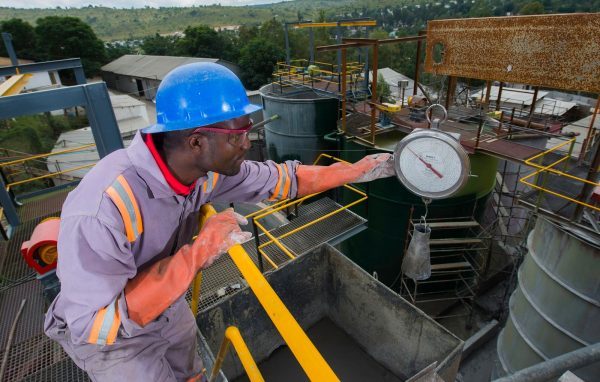Zimbabwe is primed to draw significant benefits from its diverse mineral resources amid projections that, at 7 percent growth per annum, the sector will outpace growth for the rest of the economy over the next five years.
The Government has designated the sector as anchor for the country’s economic growth in the short to medium term, driven by largely production ramp up, new projects and anticipated global commodity price boom.
Already, mining generates approximately 65 percent of Zimbabwe’s annual exports, accounts for 12 percent of Gross Domestic Product (GDP) and employs hundreds of thousands directly and along value chains.
Officially opening the Chamber of Mines of Zimbabwe (CoMZ) annual conference in Victoria Falls, President Mnangagwa acknowledged the role of mining in driving Zimbabwe’s economic growth and development.
He directed Finance and Economic Development Minister Mthuli Ncube to support the sector.
And rightly so, Minister Ncube obliged, promising incentives to support ongoing production and investments into the capital intensive industry, which he admitted was key to leveraging economic growth.
The Treasury chief then revealed that he expected the mining sector to expand by at least 7 percent annually, faster than for the rest of the economy over the National Development Strategy (NDS1)’s five-year term.
“For the mining sector, we project growth of the order of 7 percent per annum, which is above the NDS1 growth target of 5,2 percent over the five year period,” the minister said.
He said Treasury had given incentives for the mining industry including lower corporate tax, deductibility of royalties
for income tax purposes, reduced from 15 to 10 percent royalties for players in diamond mining and a sliding scale royalty system for gold mining.
Mines and Mining Development Minister Winston Chitando last week reiterated his assertion that the country was on course to meeting its target of growing the mining sector to a US$12 billion industry by 2023.
He said achievement of the mining industry milestone was a key element of the building blocks for the attainment of the national vision of transforming Zimbabwe into a middle-income society by 2030.
Key minerals that will anchor growth of the mining include gold, platinum, chrome, diamond, nickel, coal and lithium. However, Zimbabwe is home to over 40 minerals types, which presents further opportunities for investors.
Minister Chitando said “day by day, month by month (mineral) production is increasing” among the productive sub-sectors of the mining industry, including platinum, gold, chrome, diamond, coal and lithium.
In the platinum sector, the minister is on record saying mining firms; Zimplats, Unki and Mimosa were currently expanding their operations while new projects, including Karo Resources, were at different stages of development.
While new investment flows into Greenfield and Brownfield gold projects, authorities say they are working on measures to plug leakages and increase deliveries to Fidelity Printers and Refiners, the country’s sole gold buyer.
In the coal and hydrocarbons sector, he said, there are thermal power projects at different stages of development. The sector is expected to contribute more than US$1 billion to the US$12 billion target.
Under the US$12 billion mining roadmap, gold is expected to contribute US$4 billion, platinum US$3 billion, while chrome, iron, steel, diamonds and coal will contribute US$1 billion.
Lithium is expected to contribute US$500 million while other minerals will contribute at least US$1,5 billion.
Efforts are ongoing to ramp up chrome production while ferrochrome producing firms are increasing ouput.
Chinese-owned Afrochine Smelting has installed two more smelters at its plant in Selous, while Zimasco, one of the largest ferrochrome producers, has maintained its production capacity, the mines minister indicated.
In the diamond sector, the Zimbabwe Consolidated Diamond Company (ZCDC), a diamond mining company wholly owned by the Government, is looking to produce 3 million carats this year, Minister Chitando said.
Another diamond miner, Russian-owned Alrosa, is developing its diamond mining sites in Zimbabwe.
The minister reaffirmed the position that, considering the geology of Zimbabwe, some areas were best suited for mining by small-scale players, but there was significant room for participation of large-scale miners.
Minister Chitando said among other endowments, Zimbabwe had a unique resource in the form of a highly skilled human resource base, key in optimally exploiting the country’s mineral resources.
.png)




